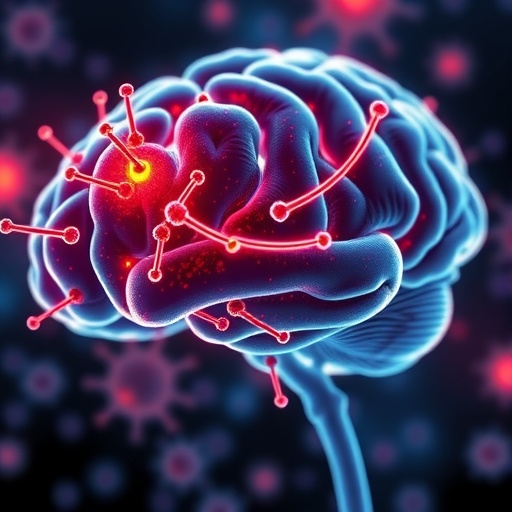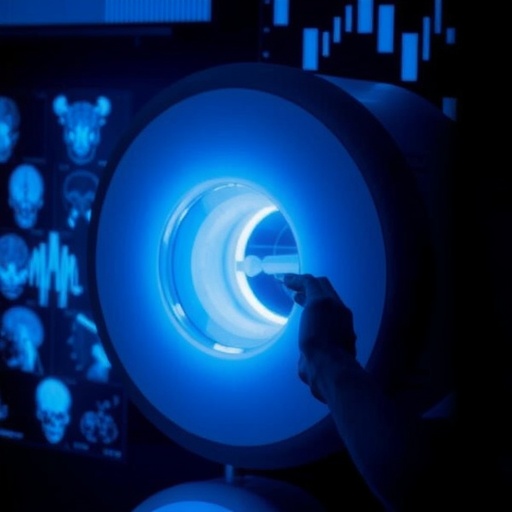In a groundbreaking new study published in Nature Neuroscience, researchers have unveiled a remarkable link between the brain’s anticipatory neural mechanisms and the activation of the immune system, even in the absence of real infection. The findings challenge the traditional understanding that immune responses are solely driven by the physical presence of pathogens. Instead, the brain’s predictive processing—its capacity to anticipate virtual infection threats—can initiate a cascade of immune responses, fundamentally reshaping our perception of the interplay between neural activity and immune function.
The investigation embarked on a novel conceptual territory: Could the brain, by merely forecasting an infectious threat, trigger physiological immune defenses? Previous research has shown the brain’s capacity to modulate immune responses through stress, mood, and other psychological states, but this study advances the field by exploring whether neural anticipation alone is sufficient to spark an immune reaction. Employing state-of-the-art neuroimaging and immunological assays, the researchers designed virtual infection scenarios that engaged the participants’ threat prediction circuits without introducing any real biological contaminants.
Central to the experiment was the creation of immersive virtual experiences simulating pathogen exposure. Participants were exposed to highly realistic but entirely simulated infectious environments, carefully designed to evoke the brain’s threat monitoring systems. During this virtual exposure, magnetoencephalographic recordings captured the neural dynamics associated with infection anticipation. Remarkably, specific brain regions—particularly those involved in interoceptive processing and threat prediction—exhibited heightened activity correlating with subsequent peripheral immune changes.
.adsslot_z7dJC6At9h{ width:728px !important; height:90px !important; }
@media (max-width:1199px) { .adsslot_z7dJC6At9h{ width:468px !important; height:60px !important; } }
@media (max-width:767px) { .adsslot_z7dJC6At9h{ width:320px !important; height:50px !important; } }
ADVERTISEMENT
Mechanistically, the study elucidates potential pathways for this mind-to-immune communication. Neuroimmunology has long posited that the autonomic nervous system and hypothalamic-pituitary-adrenal (HPA) axis mediate brain-immune crosstalk. Here, the anticipatory neural activity likely modulates sympathetic outflow and hormonal secretions that prime immune cells systemically. The increased sympathetic nervous system activity may enhance leukocyte trafficking and cytokine release, effectively ‘arming’ the body against a perceived threat. This neural priming has profound implications for understanding psychosomatic medicine and the psychological modulation of disease.
One particularly striking outcome was the temporal synchronization between anticipatory brain signals and peripheral immune readiness. The researchers observed that immune activation occurred rapidly after the onset of neural anticipation, highlighting a finely tuned communication network linking cognitive processes to somatic defenses. This rapid cross-talk suggests that the brain can act as an early warning system, preparing the body preemptively for infection risks predicted through sensory or contextual cues.
The implications of these findings ripple across multiple domains. Clinically, harnessing the brain’s anticipatory power could open new avenues for immunotherapy or vaccination strategies. For example, controlled virtual or mental imagery of infection might enhance vaccine efficacy by priming the immune system ahead of exposure. Conversely, excessive or maladaptive neural anticipation might contribute to chronic inflammation or autoimmune disorders, providing potential targets for psychological interventions.
Furthermore, the study aligns with emerging theories of embodied cognition, which posit that cognition, emotion, and physiological states continuously interact within a feedback loop. Here, the anticipation of infection is not merely a mental phenomenon but an embodied state with direct physiological consequences. This integration enriches our understanding of how subjective experiences translate into objective biological changes, reinforcing a holistic model of health.
Technically, the research incorporated advanced neuroimaging techniques, including magnetoencephalography (MEG), to record high-temporal-resolution brain activity. MEG’s sensitivity allowed the researchers to pinpoint cortical regions like the anterior insula and the posterior cingulate cortex, known for processing internal bodily states and predictive coding. Concurrently, immunophenotyping with multiplex cytokine assays provided a multidimensional profile of systemic immune shifts, bridging neural signals with blood-borne molecular markers.
The study’s methodology also featured rigorous controls to eliminate confounding factors such as stress or fear unrelated to infection anticipation. Participants’ subjective anxiety levels were monitored and statistically controlled, ensuring that immune activation was specifically attributable to neural anticipation rather than nonspecific emotional arousal. This precision affirms the specificity of the brain-to-immune signaling pathway concerning perceived infection risk.
Beyond human studies, complementary animal model experiments supported the mechanistic insights. Rodents exposed to conditioned virtual infection cues displayed parallel neural and immune activation patterns, validating the concept of anticipation-induced immune priming across species. These convergent findings enhance the robustness of the conclusions and suggest evolutionary conservation of this anticipatory immune strategy.
From a philosophical perspective, the discovery challenges the Cartesian separation of mind and body, reinforcing a deeply integrated biopsychosocial framework. The brain does not passively process infection risks; it actively prepares the immune system for impending threats. This anticipatory immune readiness may have evolved as a critical survival mechanism, providing a rapid defense advantage before actual pathogen invasion occurs.
The discovery also opens intriguing questions about the role of placebo and nocebo effects in immunology. If virtual or imagined infection can stimulate immune responses, mental states might be deliberately harnessed or inadvertently triggered, influencing disease progression and recovery. This understanding enriches psychosomatic medicine and necessitates a reevaluation of patient care paradigms incorporating cognitive and emotional dimensions in immunological disorders.
In sum, this pioneering research reveals that the brain’s anticipatory mechanisms for virtual infection are far more than abstract mental simulations. They act as potent triggers for actual immunological defenses, marking a paradigm shift in how we perceive brain-body communication. Understanding and exploiting this neural-immune bridge holds profound promise for revolutionizing medicine and deepening our grasp of human biology’s integrated complexity.
Subject of Research: Neural mechanisms underlying the anticipatory activation of immune responses during virtual infection simulation.
Article Title: Neural anticipation of virtual infection triggers an immune response.
Article References:
Trabanelli, S., Akselrod, M., Fellrath, J. et al. Neural anticipation of virtual infection triggers an immune response. Nat Neurosci (2025). https://doi.org/10.1038/s41593-025-02008-y
Image Credits: AI Generated
Tags: anticipatory neural mechanismsbrain-immune system interactiongroundbreaking neuroscience researchimmune response activationNature Neuroscience study findingsneural activity and immune functionneuroimaging and immunological assayspsychological states and immunitysimulated pathogenic environmentsthreat monitoring systems in the brainunderstanding immune defense mechanismsvirtual infection threat prediction





